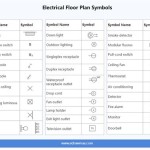How Do I Get Drain Plans For My House?
Locating drain plans for a house can sometimes feel like a treasure hunt. These essential documents, depicting the layout of the drainage system, are valuable for renovations, repairs, and understanding potential plumbing issues. This article outlines various avenues for acquiring these plans, from contacting local authorities to exploring online resources.
The most reliable source for drain plans is often the local government or water authority. These agencies maintain records of building plans, including drainage systems, for properties within their jurisdiction. Contacting the building or planning department of the relevant municipality is the recommended first step. Typically, a formal request, sometimes accompanied by a small fee, is required to access these records.
When contacting the local authorities, providing accurate property information is crucial. This includes the full address, including any unit or lot numbers, and the property's legal description if available. Having these details readily available will expedite the process and ensure the correct plans are retrieved.
The age of the property plays a significant role in the availability of drain plans. For newer constructions, digital records are more likely to exist, simplifying retrieval. However, for older homes, plans might be archived on microfilm or even exist only as paper blueprints. Patience may be required as retrieving these older records can take longer.
If the local authorities don't possess the drain plans, the next step is to investigate the property's history. Previous owners, real estate agents involved in past transactions, or even long-term neighbors might possess copies of the plans. Examining property deeds or title documents can also reveal previous owners' contact information.
For homes built by large developers, contacting the original builder might prove fruitful. Developers often retain comprehensive records of their projects, including plumbing layouts. Even if the specific drain plans are unavailable, they might be able to provide general schematics of the drainage system typical for the development.
Online resources can also be helpful in the search for drain plans. Some municipalities offer online portals for accessing building records, including drainage plans. Checking the website of the local government or water authority is recommended. However, the availability of online records varies widely depending on the region and the age of the property.
While less common, the home's original builder or architect might have retained copies of the drain plans. If the builder or architect is still in business, contacting them directly could result in retrieving the plans. Architectural firms often maintain extensive archives of their projects.
If the property has undergone significant renovations or additions, the contractors involved in these projects might possess copies of the updated drain plans. Reviewing past renovation permits and contacting the listed contractors could lead to locating the plans.
If all else fails, consider engaging a professional surveyor or plumber. These professionals have access to specialized equipment, such as ground-penetrating radar, that can help map the existing drainage system. While this method doesn't provide the original plans, it offers a practical solution for understanding the current layout.
Understanding the layout of a home's drainage system is invaluable. Drain plans assist in identifying potential problems, planning renovations, and ensuring compliance with building codes. The effort invested in locating these plans significantly contributes to responsible homeownership and can prevent costly surprises down the line.
Keeping copies of the drain plans in a safe and accessible location is highly recommended once they are obtained. This practice simplifies future inquiries and ensures the information is readily available when needed for repairs, renovations, or property sales.
The process of acquiring drain plans can vary in complexity depending on the property's age, location, and past renovations. Persistence and a systematic approach are key to navigating the various avenues of acquiring these valuable documents.
While local authorities represent the primary source for drain plans, exploring alternative avenues like contacting previous owners, builders, or contractors can prove successful. Utilizing online resources and engaging professional services when necessary are further options to consider.
Having access to accurate drainage plans empowers homeowners to make informed decisions about their property. Whether addressing a plumbing issue, undertaking a renovation project, or simply understanding the intricacies of their home's systems, these plans provide a critical foundation for responsible homeownership.

Self Build House Extension Drains Planning

House Drainage Layout Explanation

Drainage Guide Step 3 Plan Layout The French Drain

House Drainage Important Components Used In System

Plan No 1 Outside House Drainage

Where Can I Find Drainage Plans For My House Soho Real Estate

Drainage Layout Responsibility Lanes For Drains

Where Can I Find Drainage Plans For My House Soho Real Estate

Residential Drainage Life Of An Architect

How To Create A Residential Plumbing Plan And Piping Plans House Drawing Drawings








